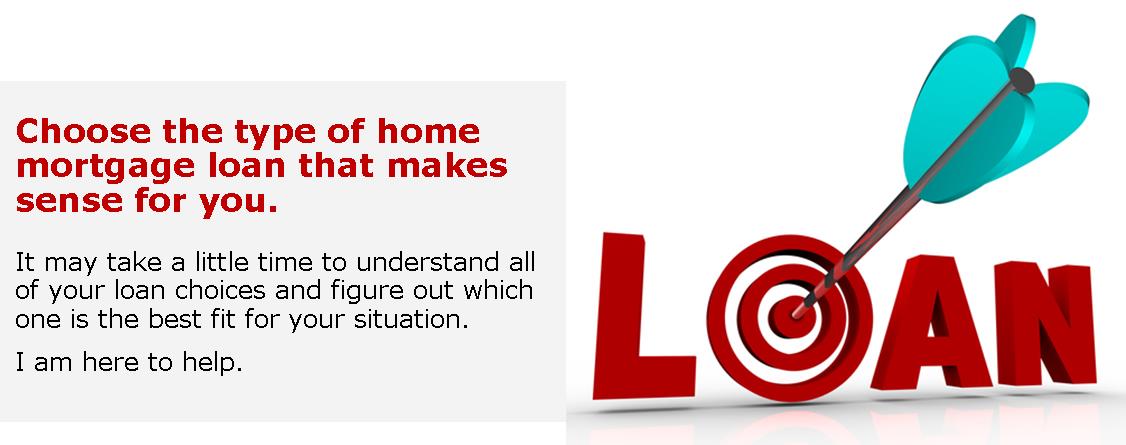
Thirty-Year Fixed Rate Mortgage:
The traditional 30-year fixed-rate mortgage has a constant interest rate and monthly payments that never change. This may be a good choice if you plan to stay in your home for seven years or longer. If you plan to move within seven years, then adjustable-rate loans are usually cheaper. As a rule of thumb, it may be harder to qualify for fixed-rate loans than for adjustable rate loans. When interest rates are low, fixed-rate loans are generally not that much more expensive than adjustable-rate mortgages and may be a better deal in the long run, because you can lock in the rate for the life of your loan.
Fifteen-Year Fixed Rate Mortgage:
This loan is fully amortized over a 15-year period and features constant monthly payments. It offers all the advantages of the 30-year loan, plus a lower interest rate—and you'll own your home twice as fast. The disadvantage is that, with a 15-year loan, you commit to a higher monthly payment. Many borrowers opt for a 30-year fixed-rate loan and voluntarily make larger payments that will pay off their loan in 15 years. This approach is often safer than committing to a higher monthly payment, since the difference in interest rates isn't that great.
FHA Loans:
The Federal Housing Administration (FHA) - which is part of HUD (U.S. Dept. of Housing and Urban Development) - insures a FHA Loan. This enables your lender to offer you a better deal.
FHA Loans offer the benefit of lower down payments (as little as 3.5%), low closing costs, and easier credit qualifying. Borrowers with FHA loans pay for Mortgage Insurance. This insurance protects the lender from a loss, should the Borrower default on their loan.
VA Loans:
While VA loans are made possible through the U.S. Dept. of Veteran Affairs, the loan approval process itself is rarely handled by that government entity. Lenders, such as myself, handle the processing of the loans.
VA loans provide a well-deserved opportunity and beneficial options through which Veterans can become home owners
Jumbo Loans:
A Mortgage that has a loan amount exceeding the conforming loan limits set by the Office of Federal Housing Enterprise Oversight. Therefore, they are not eligible to be purchased, guaranteed, or securitized by Freddie Mac or Fannie Mae.
Jumbo loans are defined as those loans above $417,000 on Single-Family Residences, except in those areas considered as more high cost *. (*Ask me for further info.)
Adjustable Rate Mortgages (ARM):
When it comes to ARMs there's a basic rule to remember...the longer you ask the lender to charge you a specific rate, the more expensive the loan.
Annual ARM:
This loan has a rate that is recalculated once a year.
Hybrid ARM (3/1 ARM, 5/1 ARM, 7/1 ARM):
These increasingly popular ARMS—also called 3/1, 5/1 or 7/1—can offer the best of both worlds: lower interest rates (like ARMs) and a fixed payment for a longer period of time than most adjustable rate loans. For example, a "5/1 loan" has a fixed monthly payment and interest for the first five years and then turns into a traditional adjustable-rate loan, based on then-current rates for the remaining 25 years. It's a good choice for people who expect to move (or refinance) before or shortly after the adjustment occurs.
Monthly ARM:
With this loan, the interest rate is recalculated every month. Compared to other options, the rate is usually lower on this ARM because the lender is only committing to a rate for a month at a time, so his vulnerability is significantly reduced.
2/1 Buy Down Mortgage:
The 2/1 Buy-Down Mortgage allows the borrower to qualify at below market rates so they can borrow more. The initial starting interest rate increases by 1% at the end of the first year and adjusts again by another 1% at the end of the second year. It then remains at a fixed interest rate for the remainder of the loan term. Borrowers often refinance at the end of the second year to obtain the best long-term rates. However, keeping the loan in place even for three full years or more will keep their average interest rate in line with the original market conditions.